The manipulation of science for ideological and financial gain has persisted throughout history. In the 1950s, Big Tobacco used advertising to downplay the harmful effects of smoking. This article exposes similar perception-shaping practices in the seating industry. Specifically, the supposition that ergonomic office chairs are ‘better’ than gaming chairs. Let’s settle the gaming chair vs ergonomic office chair debate with hard facts.
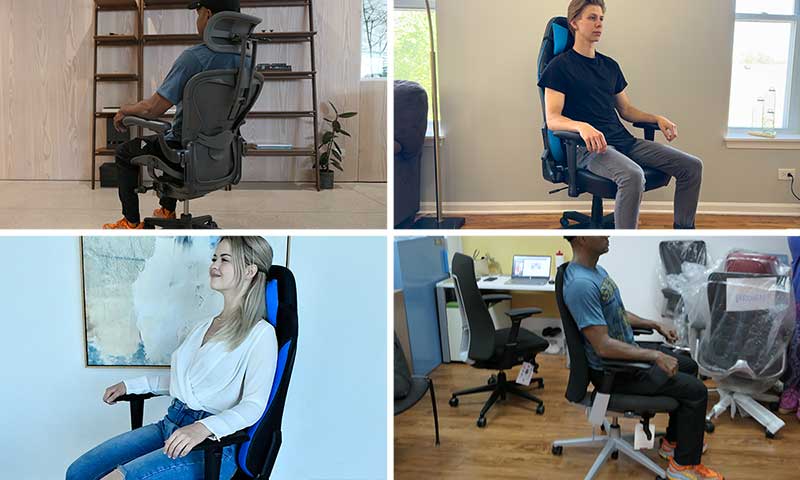
In 2010, Bloomberg published an article called Your Office Chair Is Killing You(1). It notes that much of the perception about what makes for healthy sitting comes from the multi-billion-dollar office chair industry.
To counter widespread complaints of back support, office furniture mega-corporations publicized the lack of lumbar support as the culprit. According to UC Berkeley Professor Galen Cranz, the idea of lumbar support then became “embedded in people’s perception of comfort.”

However, many experts not connected to the chair industry have dismissed the importance of ergonomically-supported postures. For example, Dr. Andrew C, Hecht is the co-chief of spinal surgery at Mount Sinai Medical Center.
Instead of perfect postures, experts like Dr. Stuart McGill (Professor Emeritus at the University of Waterloo) tout movement as the key(2) to a healthy sitting routine:
Confused? Don’t worry. The next section clarifies the science of healthy sitting in simple terms.
Healthy Sitting Fundamentals
NASA discovered the science of healthy sitting while observing astronauts in zero gravity in 1973. While working, weightless astronauts instinctively adopted relaxed, “neutral” body postures (NBP).
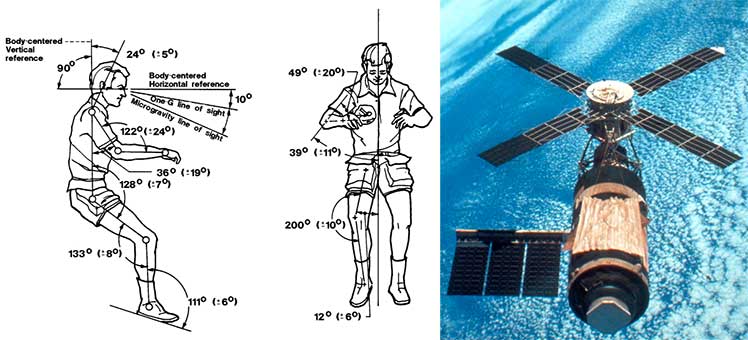
Researchers discovered that these postures align the spine into a ‘neutral’ posture. That includes a 25-45° lower back curve and a 0° neck. The problem on earth is gravity: it pulls down everything from its center of mass.
When standing with good posture, a human’s center of mass is located just below the navel. Then, muscles and ligaments surrounding the spine maintain the body in an aligned posture to counteract the pull of gravity.
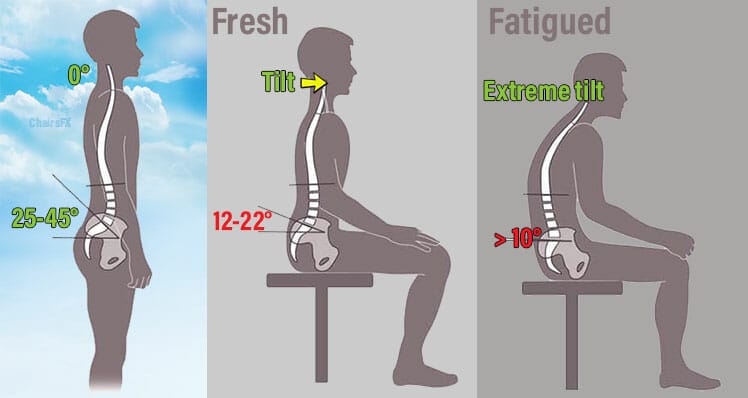
Sitting induces a postural pelvic tilt that diminishes the lower back slope by around 50%. That distorts the spine, forcing back muscles to work harder to hold itself upright.
In the 1980s, NASA then packaged its NBP findings for other industries to make use of. A decade later, NBP concepts manifested on Earth as ergonomic office chairs and car seats.
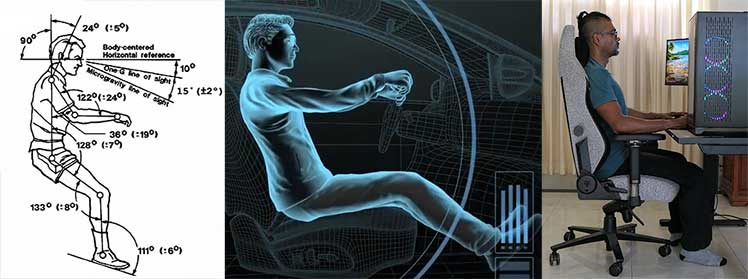
By leveraging NASA’s insights, designers created seats that support the spine into healthy “neutral” postures.
Sitting In Static Postures Is Harmful
Neutral postures align the seated spine. That relieves back muscles, making it easy to sit for long periods with good posture. However, static sitting positions — even neutral ones — for too long causes postural fixity(3). That describes a static loading of back or shoulder muscles.
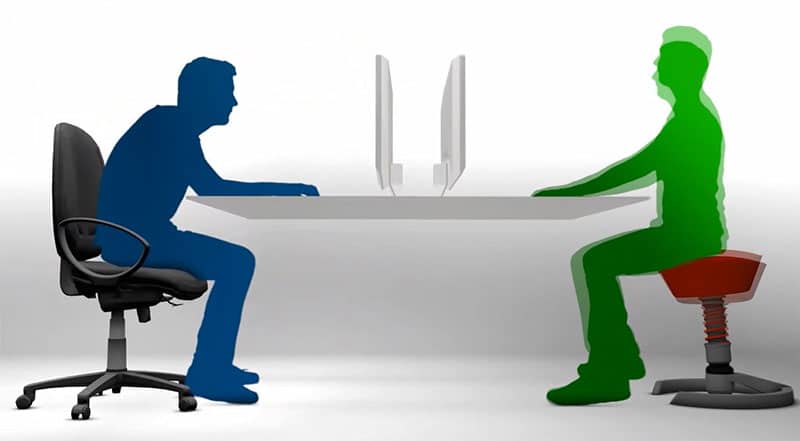
Static loading overworks some muscles, underworks others, and reduces blood circulation. This is why high-end office chairs have fancy tilt functions.
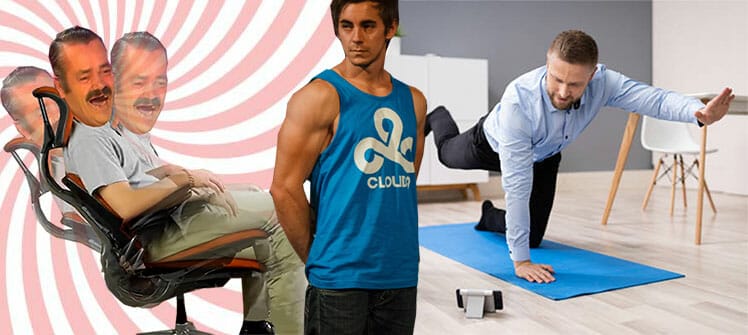
However, a 2013 systematic review found no evidence to support any benefits from dynamic chair functions. In contrast, it found plenty of evidence that joint and muscle activity is affected more by tasks (like walking or stretching breaks) than by dynamic chairs.
As a result, a growing number of experts now promote seated movement over perfect sitting postures(4) for healthy sitting.
The Perfect Sitting Posture Is Subjective
A biomechanically perfect neutral sitting posture includes a 25-45° lower back curve and a 0° neck tilt. However, rigid adherence to this ideal is counterproductive. That has led to a preference among physiotherapists for imperfect dynamic neutral variations.
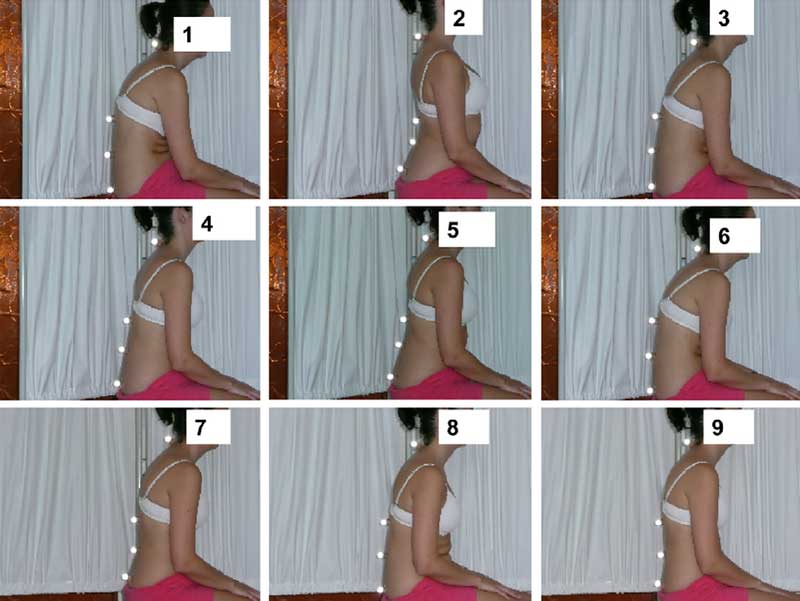
For instance, one study surveyed 295 European physiotherapists across four countries. Each was asked to choose the ‘healthiest’ sitting posture from nine options. 85% chose either posture 5 (30.5%) or posture 9 (54.9%).
- Posture 5: involves an “extension in both the lumbar and thoracic regions, as well as some forward trunk lean.”
- Posture 9: involves “a relatively neutral spine sitting posture with lordosis mainly in the lumbar spine and with relaxation of the thoracic spine.”
This shows that there is no consensus on the ‘healthiest’ sitting posture. Instead, each definition — even among physiotherapists — is subjective.
Gaming Chair Vs Ergonomic Office Chair
Key points:
- Ergonomic chairs support neutral postures: gaming chairs and ergo office chairs both qualify as ‘ergonomic’.
- Gaming Vs office dynamic posture: both provide seat and backrest tilting functions with minor variations.
- Dynamic neutral posture limits: studies show more benefits from standing breaks than fancy chair tilt functions.
- Psychological comfort: a user’s ‘perception’ of a chair’s comfort can impact the physical comfort it provides.
Ergonomic Chairs Support Neutral Postures
What makes a chair ‘ergonomic’? OSHA, BIFMA, the Human Factors & Ergonomics Handbook, and other leading institutions define it the same way.

To qualify as ‘ergonomic’, a chair needs three adjustable features. Adjustable lumbar support aligns the spine. Adjustable arms provide extra bracing to hold the spine upright. A reclining backrest helps a seated body move.

Using this combination of features, it’s possible to maintain decent neutral postures in any type of chair. The ‘gaming vs office’ classic matters less than having the necessary adjustable features.
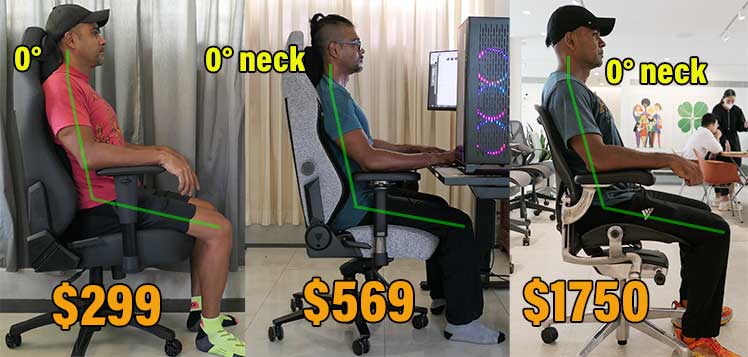
By maintaining neutral sitting habits, users can (in theory) ward off the musculoskeletal stresses caused by slouching.
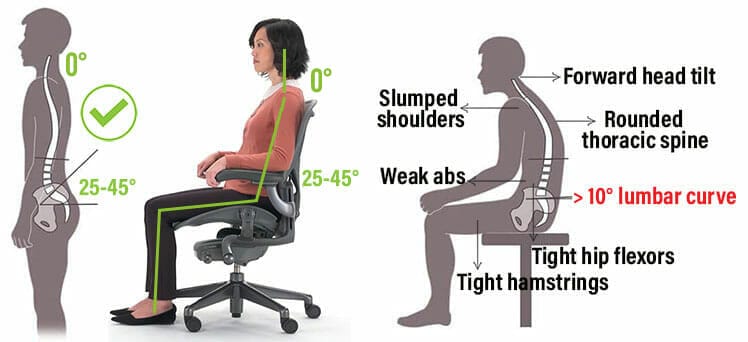
However, in practice, fixed postures — even healthy ones — will overload muscles and ligaments while sitting. Therefore, the objective in any type of chair is to move frequently while you sit.
Gaming Vs Office Dynamic Posture
Full-back gaming and mid-back ergonomic office chairs are both equipped to support dynamic neutral postures. Neutral support comes from adjustable lumbar + armrests + backrest recline trio; the dynamic aspect differs.
Dynamic Sitting In An Office Chair
Ergonomic office chairs typically come with two features to enable movement while sitting. The first is an adjustable reclining backrest.
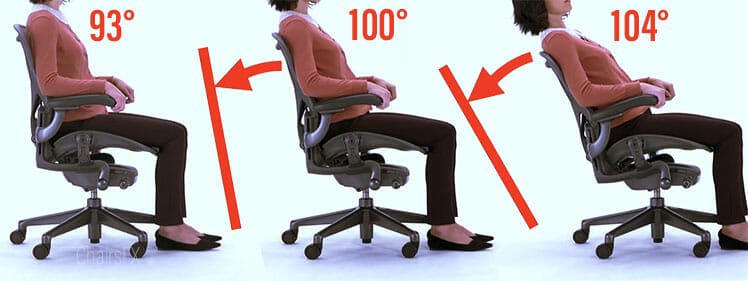
Most models (like the Herman Miller Aeron) come with limited ranges. These are designed to allow movement while preserving good posture by keeping users upright.
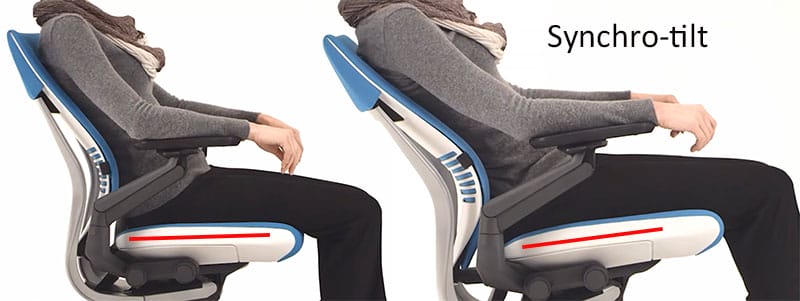
Most high-end office chairs also come with a feature called synchronous tilt. This automatically tilts the seat up as the user reclines. That hits the hips, legs, and back muscles with an invigorating movement boost.
Dynamic Sitting In A Gaming Chair
Like ergonomic office chairs, gaming chairs support movement with two features: a reclining backrest and a tilting seat. There are some minor differences in the gaming chair application of these features.

First, full-back gaming chairs come with deep recline functionality. This can be adjusted so support activities beyond upright desk work: reading, watching movies, or even napping.
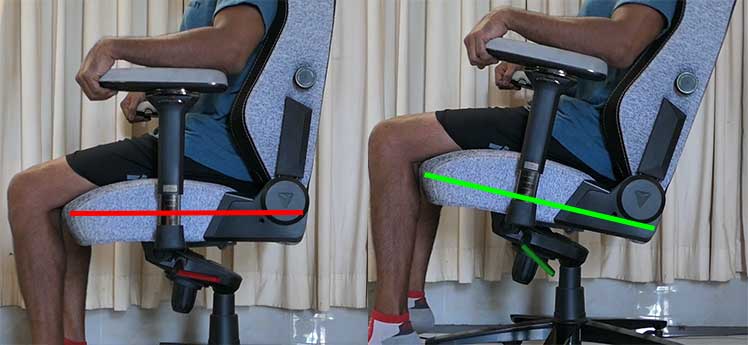
Second, gaming chair seat tilt functions are manually activated, not automatic. For instance, the Secretlab Titan’s seat tilt can be manually set across 6 positions with an 11° range.
Dynamic Chair Function Limitations
In 2013, ergonomist Jennifer Pynt released a paper calling for new dynamic sitting design parameters(6). Current parameters address ramifications from prolonged sitting by facilitating movement.
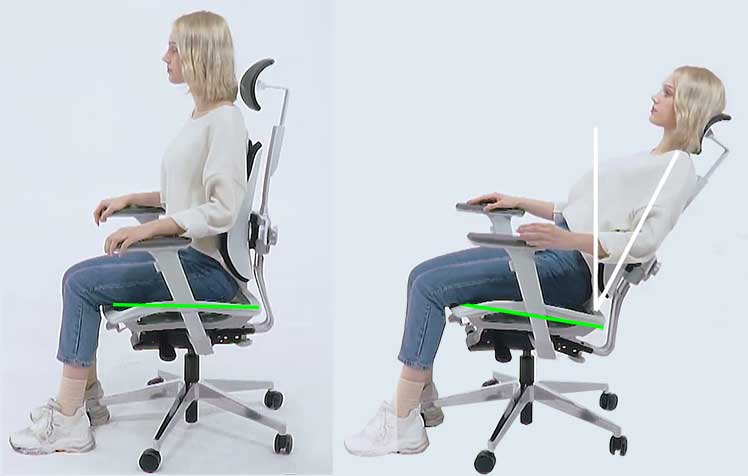
However, a systematic review found no evidence “to support the use of dynamic sitting approaches as an effective”. Instead, it found that joint and muscle activity is affected more by tasks than by dynamic chair designs.

For instance, instead of flopping around in a chair, standing up for a short walking or stretching break yields many physical and mental benefits.
Psychological Appeal = Major Comfort Factor
When a chair looks more comfortable, users are likelier to perceive it as more physically comfortable. For example, a comfort study was done using airplane seats with and without headrests.
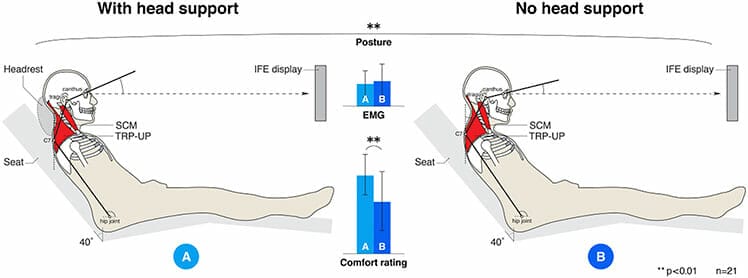
In seats without a headrest, users would keep their heads balanced at a 0° tilt (good neck posture). Adding a headrest encouraged a rearward head tilt and degraded posture.
Even so, most subjects reported slouched, headrest-supported seats as more comfortable.
Physical Vs Psychological Chair Comfort
Good posture on its own isn’t very sexy. Thus, chairs that only support good posture may come across as boring. In contrast, fancy chairs with flashy features appear more comfortable at a glance.
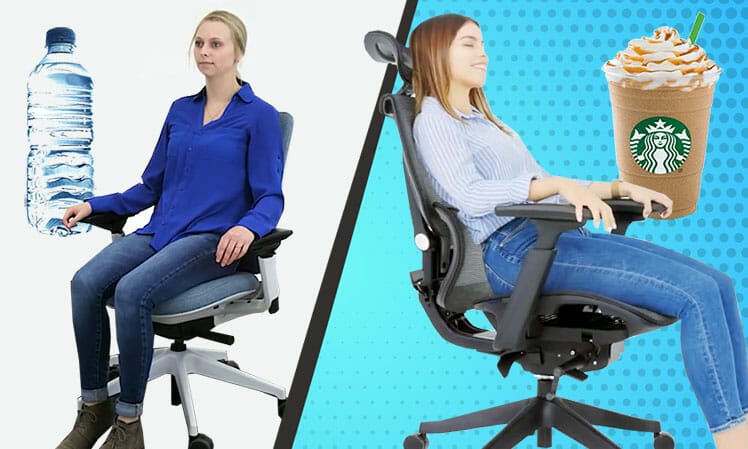
With that belief, users are more likely to find flashier chairs physically comfortable. Key physical vs psychological factors:
Physical Comfort Factors
- Proper chair sizing
- Adjustable features to support neutral postures (lumbar, arms, backrest)
- Lumbar support suitability for your size
Psychological Comfort Factors
- Deep recline functions
- Headrests that distort good neck posture
- Flashy upholsteries
- Fancy seat tilt functions
- Prestigious brand names (Herman Miller, Steelcase, etc)
Bottom line: gaming chairs and ergonomic office chairs both support physical comfort by supporting dynamic neutral postures. Both do so using similar mechanisms.
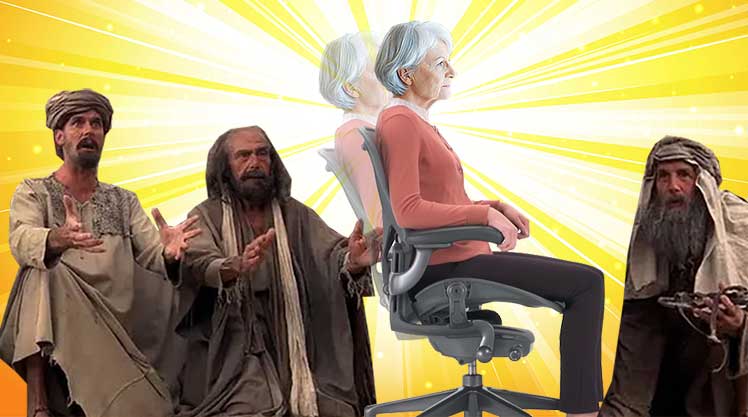
This means that passionate debates about ‘gaming chairs vs ergonomic office chairs’ are subjective discussions about psychological comfort factors.
Shifting Postural Trends
- Generational priority shift: Younger generations demand more flexible seating than what rigid ergonomic office chairs provide.
- Esports fitness model: Young people are more likely to follow the esports optimization route. Instead of good posture, it promotes health and fitness as performance optimization keys.
- Chairs Used By Pros: Most elite streaming pros use either gaming chairs or ergonomic office chairs. Most also focus on fitness over good posture to maintain high computing performance.
- Strong core muscles: Some high-profile users intentionally develop strong core muscles to make their sitting times easier — in any type of chair.
Generational Shift To Casual Sitting Styles
In late 2022, two of the world’s largest office furniture corporations released full-back gaming chairs. First, Haworth released the Fern x Halo Gaming chair.
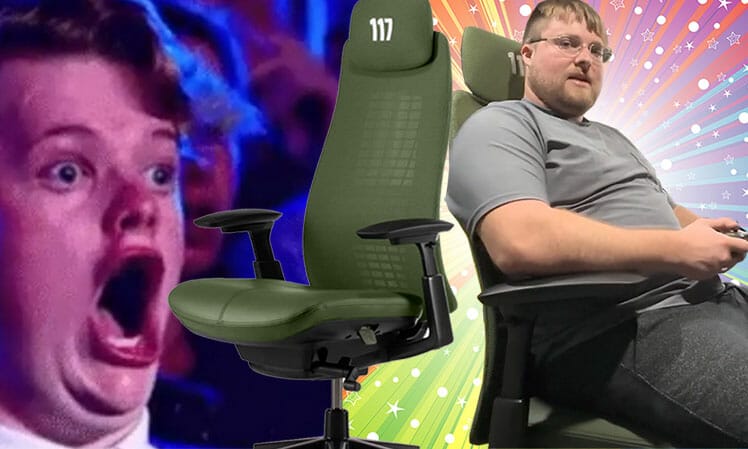
Soon after, Herman Miller released the Vantum Gaming Chair as a seating ‘revolution’. Like other full-back gaming chairs, it has a full-back design that supports relaxed, semi-neutral postures.
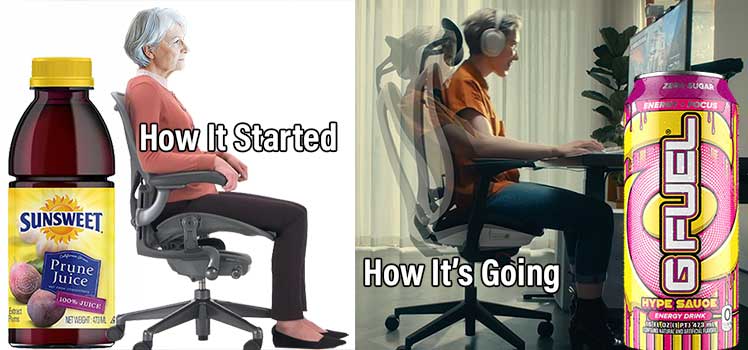
In a press release, Herman Miller Gaming GM Jon Campbell explained the move away from strict neutral postures as generational. According to Herman Miller research, ‘Gamers’ (Millennials and younger) demand more versatility:
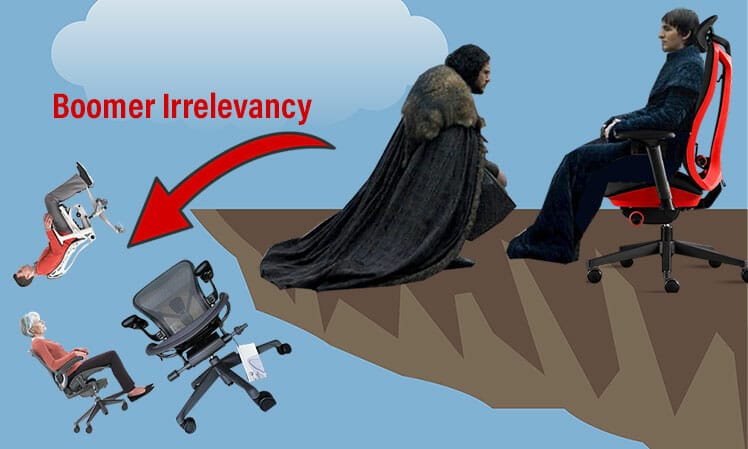
In a later interview, he doubled down: existing Herman Miller chair owners sitting in neutral postures are doing it wrong!
Esports Model: Fitness Beats Chair Postures
The modern esports performance optimization template goes well beyond the chair. Most teams now prioritize healthy lifestyles (and mindsets) when away from the computer to boost performance.
The idea is that healthy, rested, players perform better at a computer. Esports coach Taylor Johnson says the performance optimization field focuses on ‘influencing’ players to adopt healthy lifestyles.

Johnson was one of the first to boil the esports performance blueprint down to four pillars: regular exercise, nutrition, sufficient rest, and mental balance.
These concepts are supported by three prominent esports doctors interviewed by ChairsFX. Dr. Jordan Tsai has worked with players from Cloud9, Evil Geniuses, TSM, 100 Thieves, and other top teams.
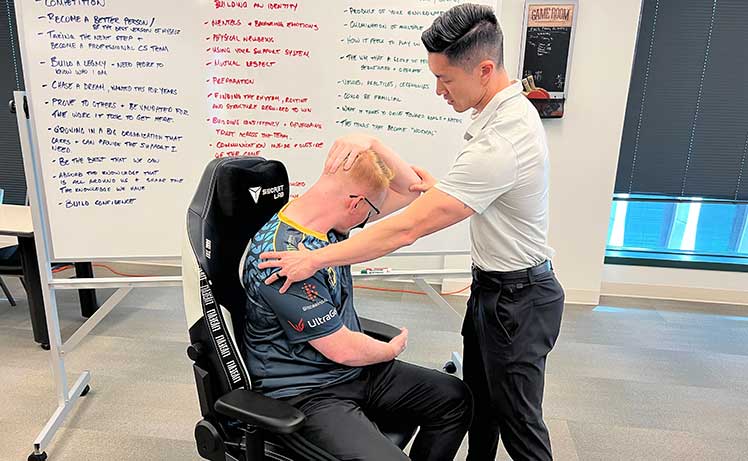
He touts fitness as more important than a good chair to maintain health while sitting. “A regular range of motion exercises, strengthening, and stretching are all critical.”
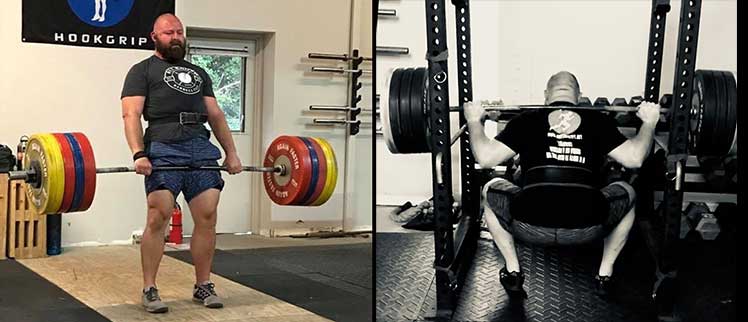
Dr. William Duncan works with both esports and traditional athletes. He adds that gamers should “work on strength & endurance and use a good chair.” Learn more:
What Chairs Do The Pros Use?
Many of the world’s top esports teams use full-back gaming chairs; a few use Embody chairs. Most teams also invest heavily to ensure peak player performance. But many players don’t maintain strict neutral postures while competing.
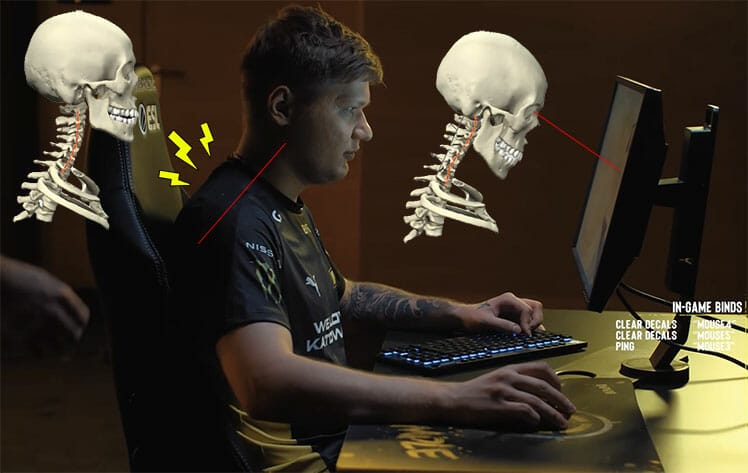
For example, Oleksandr ‘s1mple’ Kostyljev plays CS:GO player for Natus Vincere. His gaming setup walkthrough(7) shows off a less-than-ideal forward neck bend.
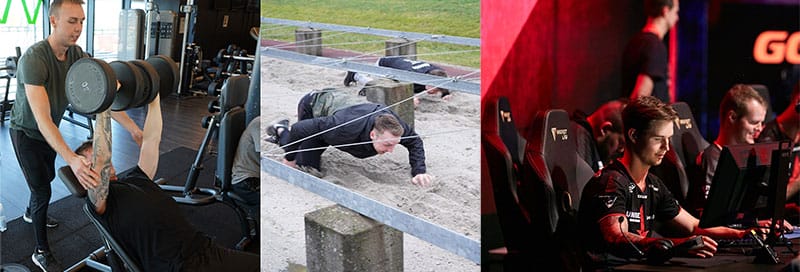
Instead of focusing on perfect posture, he maintains peak performance with similar cookie-cutter strategies that elite teams and streamers use.
Top Streamers: Quasi-Neutral Postures + Fitness
Like esports pros, many of the world’s top streamers also use a semi-neutral posture + fitness performance strategy. Every top-20 streamer is a multi-millionaire with a limitless chair budget.
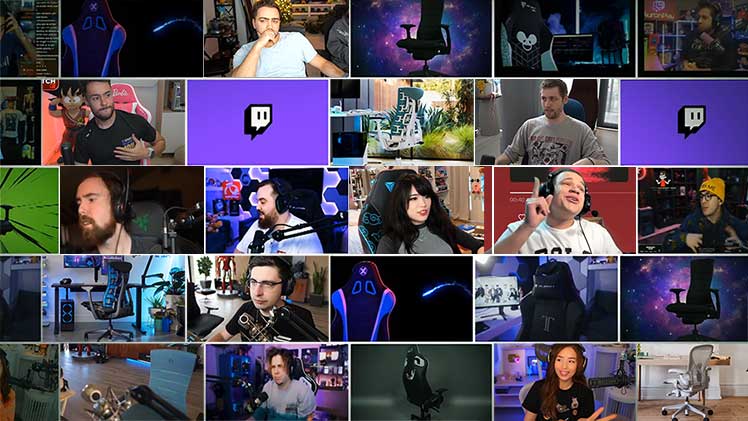
Even so, there’s no clear consensus chair type used most often. Among 12 of the top Twitch streamers of 2024, half use full-back gaming chairs; the other half uses ergonomic office chairs.
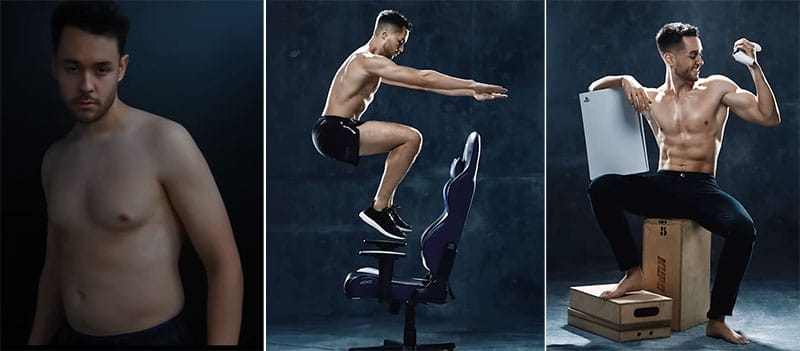
Like top esports pros, many top streamers incorporate esports performance pillars into their routines. For instance, Spanish streaming star TheGrefg recently completed a full body makeover by focusing on getting sufficient rest, exercise, and nutrition.
Strong Back Muscles Make Sitting Easier
According to this study(4), there is no evidence to support the idea that strong back muscles support good sitting posture.
Yet, there are documented cases of people developing strong back and core muscles to specifically make healthy sitting postures easier to maintain.
Magnus Carlsen: Core Exercises
In 2017, the world’s #1 chess player Magnus Carlsen faced a new generation of computer-trained chess pros. His matches became more grueling and intense. Then, he embarked on a lifestyle makeover that took his chess performance to higher levels.
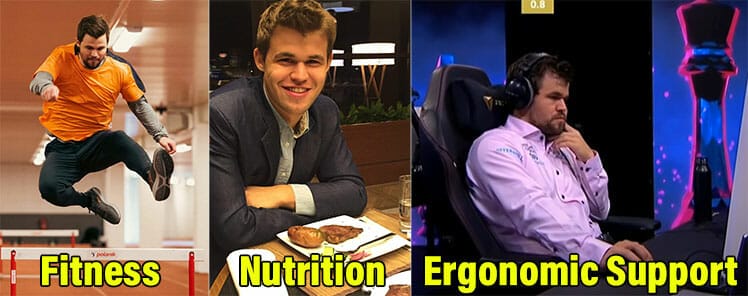
First, he adopted the Secretlab Titan Evo as his official chess chair. Then, he used a modified version of the 4 esports performance pillars.
For the exercise portion of the 4-pillar formula, he focused on developing a strong core. According to his fitness coach, long sitting hours during chess competitions weakens core muscles.
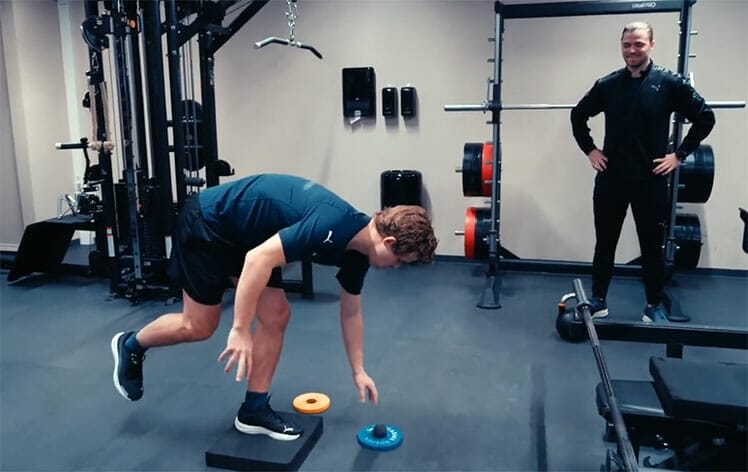
To counteract that, Magnus’ fitness routine focuses on building strong core muscles. With stronger core muscles and his Titan Evo chair, Magnus can sit for longer periods without energy-sapping muscle strain.
Magnus Carlsen Pro Chess Fitness + Brainpower Hacks
Anil Ramsey: Back Workouts
Last year, I decided to experiment with achieving perfect neutral postures (25-45° lower back, 0° neck) as my default position while sitting.
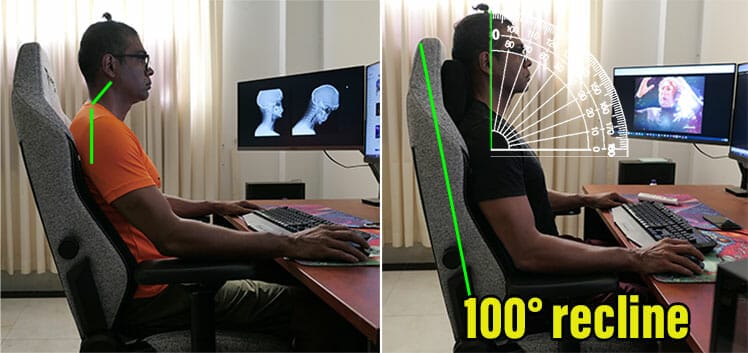
In a Secretlab Titan Evo gaming chair, that involves setting the backrest to a 100° recline while bracing your whole spine against the backrest and headrest. I then asked three esports doctors to verify the results as a valid neutral posture.

They all agreed my ‘perfect’ posture was technically valid. However, all warned that it was overkill — dynamic casual postures + breaks were sufficient.
Two of them warned that sitting perfectly upright for long periods demands strong back muscles. Dr. Elliot Smithson admitted a perfect posture was handy as a ‘postural reset’. However:
Despite these warnings, I decided to hit the gym and develop strong back muscles. I focused on pullups and deadlifts. After a month of practice, I was able to do 10 pullups easily. Then, sitting got a lot easier.
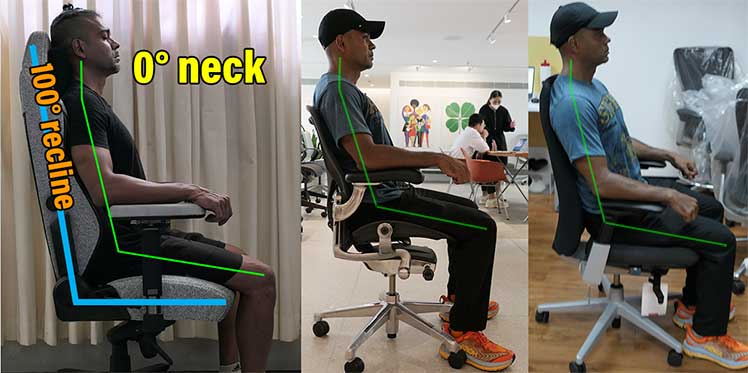
These days, with strong back muscles, I find it easy to enjoy comfortable neutral postures in any ergonomic chair. Any model with adjustable lumbar + adjustable arms + a reclining backrest can provide the support I need.
Office Chair Myths Debunked
The tobacco industry once convinced society that smoking cigarettes isn’t harmful. In a similar fashion, the ergonomic office chair industry has convinced the public that its chairs provide medical-grade back support.

Google’s Gemini AI scrapes user-generated content sites like Reddit to define its reality. It declares ergonomic office chairs better than gaming chairs by parroting the same points you’ll find in public web forums.
Myth: Office Chairs Have Better ‘Ergonomics’ Than Gaming Chairs
Gemini: It’s important to acknowledge concerns raised by ergonomists and healthcare professionals regarding the potential for certain gaming chair designs to encourage unhealthy postures compared to chairs designed with ergonomics in mind.
Reality:
- Fabricated ‘concerns’: Reputable ergonomists and healthcare professionals do not endorse specific chair models. Because of this, no peer-reviewed studies have been done that objectively compares one type of chair over another.
- Undefined ‘ergonomics’: a chair designed ‘with ergonomics in mind’ assumes that ‘ergonomics’ is vague and undefinable. In fact, it means the chair has adjustable lumbar + adjustable arms + a reclining backrest.

Gemini also parrots the misconception that “gaming chair designs often prioritize aesthetics over ergonomics.” This can only be true if you leave the term ‘ergonomic’ undefined.
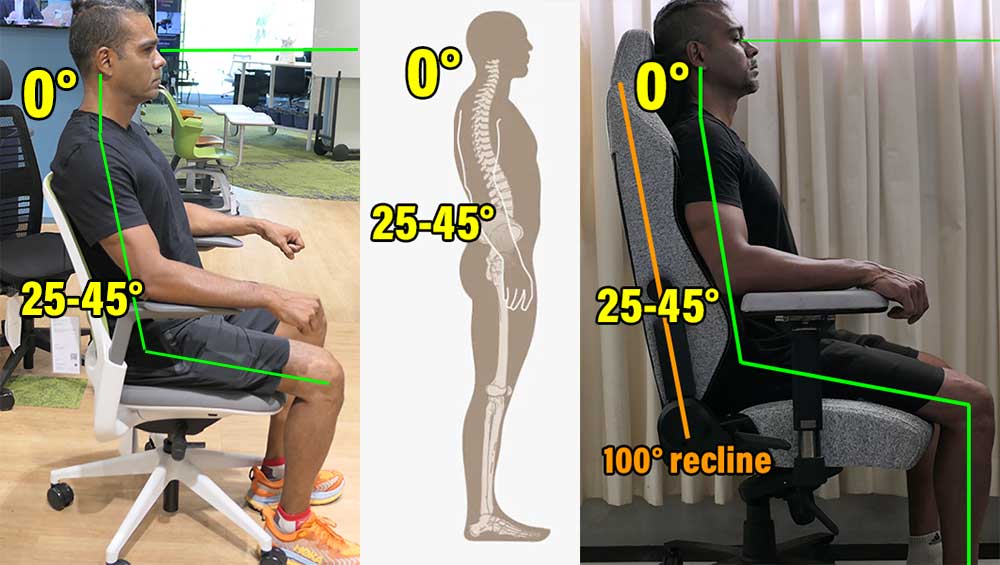
In reality, any chair with adjustable lumbar + arms + backrest recline qualifies as ‘ergonomic’. That means the chair is equipped to support dynamic neutral postures. However, the results aren’t automatic; proper user habits are necessary to ensure the best results.
The Truth About “Good Ergonomics”
The ‘Best’ Type of Chair is Subjective
Despite what tobacco companies advertise, smoking is bad for you. In a similar fashion, when someone tells you that office chairs have ‘better ergonomics’ than gaming chairs, they might be a zealot spreading commercial dogma.

These facts override the dogma:
- Neutral postures: a perfect neutral posture (25-45° lower back, 0° neck) positions a seated spine into a healthy alignment.
- Ergonomics: ergonomic chairs support neutral postures. To qualify as ‘ergonomic’, a chair needs adjustable lumbar support, adjustable arms, and a reclining backrest.
- Dynamic postures: holding any single posture can overwork muscles. Users should strive to deviate from neutral to relaxed postures frequently.
- Assisted dynamic postures don’t help: no evidence shows any benefits from a chair’s seat tilting functions. Plenty of evidence supports task-based dynamic activities like walking breaks.
- Perfect postures don’t exist: the need for frequent movement means that many variations of a strict neutral posture are good for you.
- Psychological comfort: beyond the essential neutral-supporting components, a chair’s luxuries are meant to provide extra psychological comfort.
So which is better: a gaming chair or an ergonomic office chair? The answer depends on you. Given the facts, you should choose the type that most appeals to your sensibilities.
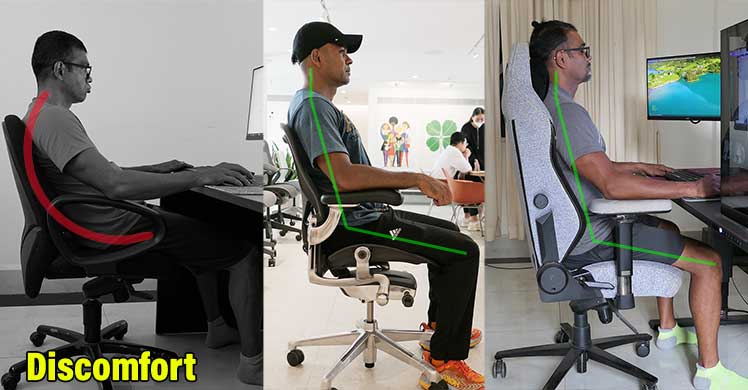
Then, you should focus on maintaining dynamic neutral postures while using it. On top of that, you should take many walking breaks to stretch your legs and boost your blood circulation.
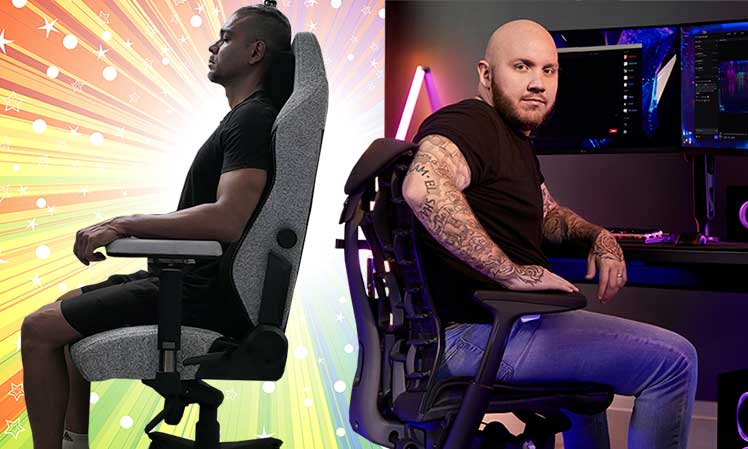
Whichever type of chair you choose, optimal usage is essential. If new to ergonomic seating best practices, these guides will get you educated quickly:
Step-by-step: How To Sit In A Gaming Chair
Related: Step-by-step: How To Sit In An Ergonomic Office Chair
Footnotes
- ‘Your Office Chair Is Killing You’. April 29, 2010. https://www.bloomberg.com/news/articles/2010-04-29/your-office-chair-is-killing-you, (accessed 26 February, 2024).
- Dr. Stuart McGill. ‘Ultimate Back Fitness and Performance (6th Edition-2017)’. 2017. https://www.backfitpro.com/books/ultimate-back-fitness-and-performance-6th-edition-2017/, (accessed 26 February, 2024).
- Nico J. Delleman, et al. ‘Working Postures and Movements’. CRC Press, April 24, 2004. https://www.taylorfrancis.com/books/edit/10.1201/9781482265095/working-postures-movements-christine-haslegrave-nico-delleman-chaffin, (accessed 26 February, 2024).
- Diane Slater, et al. ‘Sit Up Straight: Time to Re-evaluate’. Journal of Orthopaedic and Sports Physical Therapy 49(8):562-564. August, 2019. https://www.researchgate.net/publication/334846053_Sit_Up_Straight_Time_to_Re-evaluate, (accessed 5 February, 2024).
- Kieran O’Sullivan, et al. ‘What do physiotherapists consider to be the best sitting spinal posture?’ Manual Therapy 17(5):432-7. May, 2012. https://www.researchgate.net/publication/225047618_What_do_physiotherapists_consider_to_be_the_best_sitting_spinal_posture, (accessed 5 February, 2024).
- Jennifer Pynt. ‘Rethinking design parameters in the search for optimal dynamic seating’, J Bodyw Mov Ther. 2015 Apr;19(2):291-303; Epub 2014 Jul 22. DOI: 10.1016/j.jbmt.2014.07.001 (accessed 7 June 2023).
- Youtube, “Set up like S1mple – WITH CFG!” ESL Counter-Strike, March 18, 2022, https://youtu.be/REjATuWa5TY




